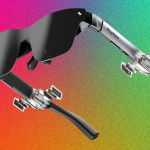Two students attending the Southern Methodist University in Dallas, Texas, created a minute supercomputer composed of sixteen NVIDIA Jetson Nano modules, power supplies, cooling fans to disperse heat, and one network switch and encased it into a clear acrylic case.
Two students at Southern Methodist University in Dallas create a desktop supercomputer using sixteen NVIDIA Jetson Nano modules
The university received outside funding to design the desktop Jetson Nano supercomputer. This tiny supercomputer created by the two students is roughly the size of a standard desktop PC tower, which was built to educate students about the inner workings of a computer cluster.
The Jetson cluster took four months of learning and labor to be designed and created, and the students were educated on networking. For manual understanding, the students were presented with the sixteen Jetson Nano modules, initially encased in cardboard containers. This technique allowed the students to use the cardboard boxes to dissipate heat while designing the remainder of the cluster supercomputer. The students learned how to strip wires and laser cutting techniques properly.
Image source: NVIDIA and the Southern Methodist University.
We started this project to demonstrate the nuts and bolts of what goes into a computer cluster. Our Nvidia DGX SuperPOD just opened up on campus, so we don’t really need this baby supercomputer to be an actual compute environment. But the mini cluster is an effective teaching tool for how all this stuff really works — it lets students experiment with stripping the wires, managing a parallel file system, reimaging cards and deploying cluster software.
— Eric Godat, team leader for Research and Data Science IT group, Southern Methodist University
Image source: NVIDIA
The NVIDIA Jetson Nano, which retails for $99 from the company, offers a 64-bit Arm A57 processor and an NVIDIA Maxwell graphics card with 128 cores. The Jetson Nano is slated to deliver about 472 GFLOPs of FP16 compute, which has become the standard for introductory AI workloads.
Each cluster consumes 10W of power. The small cluster computer uses USB, HDMI, and Ethernet and contains M.2 sockets and 4GB of LPDDR4 memory, and 16 GB of eMMC space. The system runs the open-source operating system Ubuntu, which is exclusively designed to work with NVIDIA hardware. Video encoding and decoding support as high as 4K video at 60 frames per second and supports the HEVC codec. The NVIDIA Jetson Nano also utilizes the company’s Jetpack application to assist with educating students on machine learning on a minute scale.
The post Students Build Desktop Supercomputer From 16 NVIDIA Jetson Nano Clusters by Jason R. Wilson appeared first on Wccftech.







